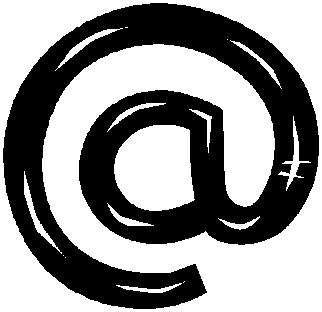Email Basics: Accounts versus Aliases

By Vanessa Salvia, 12/1/11
It’s hard to imagine running a business these days without email. Even with the rise of Social Media, email is the ol' reliable method of communicating across the Internet.
We all use email daily and often take it for granted. Many of our customers have some confusion about the difference between an email account and an alias. We want to help you understand some of the key differences.
Email Accounts
In order to send and receive email messages, you must have an account on a mail server, somewhere, that will store your email messages until you retrieve them. Email accounts are set up on an Internet mail server, and when email messages are sent to your address, they are routed to your account on that server and stored there until you retrieve them. You can use an email client, like Gmail, Outlook, Windows Live Mail, or OSX Mail (which used to be called Mac Mail) to log into your email account on your provider’s email server and download your messages. As a note--while Gmail is very similar to other webmail accesses, in that you go to a website to check your email and there is no Gmail software that you have to install and configure, Gmail is actually a web-based email client with more features, customization and functionality than the typical email client.
With the email account you receive through HEROweb, we provide several ways to access your email, including on your desktop computer's email client (as described above), a mobile device such as a smartphone, or via webmail. Whichever method you choose to access, you are still accessing only one central, primary email account.
Some characteristics of email accounts:
• Messages can be stored on the server.
• Messages can also be forwarded to one or more email accounts.
• Auto-responder messages can be set up to notify contacts when you are not at your desk (going on vacation).
• Email account providers put a storage limit on the amount of electronic mail that can be stored by one email account.
For most people, one account is sufficient. There are storage and management costs associated with email accounts. For instance, even a Gmail has storage limits Usage beyond their set limit requires a fee with many providers.
Email providers also provide services to manage and block spam. These services require sophisticated software and ongoing management on the part of the email provider.
Aliases
An alias looks like an email account address but it is technically different. An alias does not have a storage area on an email server; rather, it immediately forwards all messages to one or more email accounts. Email aliases are often created to be a generic contact email, such as “support@” or “info@” addresses that either multiple people can check or as a replacement for a long or difficult to remember email address. An alias won’t work without an already functioning email account; an alias simply forwards email to an account you already have, such as a Gmail account. You can have as many aliases as you want to forward to a primary email account.
Some characteristics of aliases:
• Set up of aliases is easy.
• If your business is small (as in, you’re the only one) you can create email aliases for “Support@”, “info@”, “sales@” and whatever other department you need an email for, and they can all be set to forward to an account you already have.
• There is no storage quota for aliases, because every message that comes in is simply forwarded to another account.
We all use email daily and often take it for granted. Many of our customers have some confusion about the difference between an email account and an alias. We want to help you understand some of the key differences.
Email Accounts
In order to send and receive email messages, you must have an account on a mail server, somewhere, that will store your email messages until you retrieve them. Email accounts are set up on an Internet mail server, and when email messages are sent to your address, they are routed to your account on that server and stored there until you retrieve them. You can use an email client, like Gmail, Outlook, Windows Live Mail, or OSX Mail (which used to be called Mac Mail) to log into your email account on your provider’s email server and download your messages. As a note--while Gmail is very similar to other webmail accesses, in that you go to a website to check your email and there is no Gmail software that you have to install and configure, Gmail is actually a web-based email client with more features, customization and functionality than the typical email client.
With the email account you receive through HEROweb, we provide several ways to access your email, including on your desktop computer's email client (as described above), a mobile device such as a smartphone, or via webmail. Whichever method you choose to access, you are still accessing only one central, primary email account.
Some characteristics of email accounts:
• Messages can be stored on the server.
• Messages can also be forwarded to one or more email accounts.
• Auto-responder messages can be set up to notify contacts when you are not at your desk (going on vacation).
• Email account providers put a storage limit on the amount of electronic mail that can be stored by one email account.
For most people, one account is sufficient. There are storage and management costs associated with email accounts. For instance, even a Gmail has storage limits Usage beyond their set limit requires a fee with many providers.
Email providers also provide services to manage and block spam. These services require sophisticated software and ongoing management on the part of the email provider.
Aliases
An alias looks like an email account address but it is technically different. An alias does not have a storage area on an email server; rather, it immediately forwards all messages to one or more email accounts. Email aliases are often created to be a generic contact email, such as “support@” or “info@” addresses that either multiple people can check or as a replacement for a long or difficult to remember email address. An alias won’t work without an already functioning email account; an alias simply forwards email to an account you already have, such as a Gmail account. You can have as many aliases as you want to forward to a primary email account.
Some characteristics of aliases:
• Set up of aliases is easy.
• If your business is small (as in, you’re the only one) you can create email aliases for “Support@”, “info@”, “sales@” and whatever other department you need an email for, and they can all be set to forward to an account you already have.
• There is no storage quota for aliases, because every message that comes in is simply forwarded to another account.
When using the HEROweb email system, our tech team sets up these alias accounts for our customers, so that their email is
redirected correctly to whatever account they want it to be.
Typically, keeping your accounts to a minimum makes email as a whole easier to manage. Learning to use the email filtering and labeling tools and spam management tools that the email provider offers can reduce the number of unwanted message you have to sort through as well as make important or priority emails more visible.
If you would like to understand your current email addresses and aliases, contact us and we will be glad to go over it with you.

